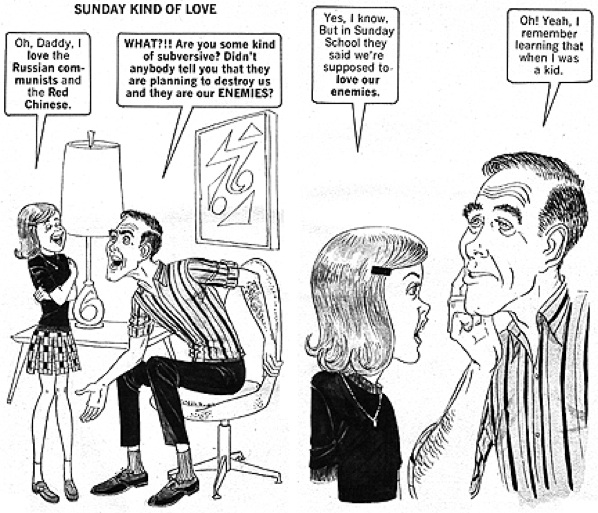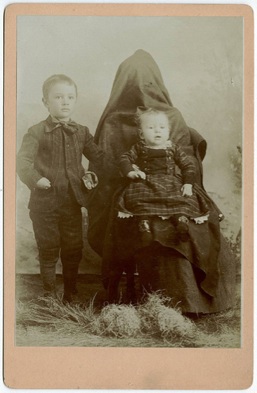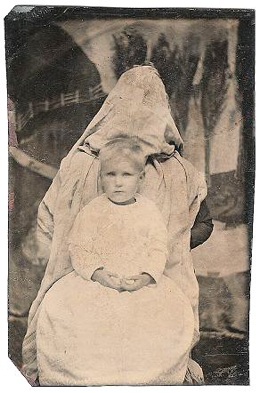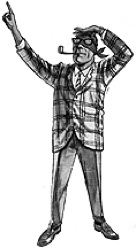The Latest from Boing Boing |  |
- Bone Dry Red Cabernet wine label
- Bobby Farrell, 1949-2010
- Bill Murray anti-tech rant: robots, digital watches, talking cars, 1982
- Denis Dutton, founder of 'Arts & Letters Daily,' has died
- A British countryside Christmas with Julian Assange
- A cave in Vietnam so tall, a skyscraper could fit inside
- "Rosie the Riveter" dead at 86
- A look back at a decade in tech: Xeni on NPR's "All Things Considered"
- Vice Guide to the Business of War
- Meta-meta on Greenwald v. Poulsen re: Manning/Lamo/Wikileaks: "The evanescence of Twitter debates"
- New Year resolution: Watch more meteor showers
- Breathtaking photo essay of the Paris Metro
- FBI raids TX-based server hosting business in "Operation Payback" probe
- Guardian responds to Bianca Jagger smears over Assange legal dramz (oh my!)
- East Side: Dirty, dirty
- Surprise presentation by Openleaks' Daniel Domscheit-Berg at 27c3
- Making maple syrup in a hotter world
- Terre Thaemlitz on MAD's Dave Berg, Roger Kaputnik, and Post-Modernity
- Space Jam Website
- Hidden Mother tintypes
- iPad docking log
- He-Man storyboards
- Ew's and Ah's: Photos from a hospital medical museum
| Bone Dry Red Cabernet wine label Posted: 30 Dec 2010 10:00 PM PST  We had a bottle of this Bone Dry Red Cabernet at my in-laws' home in Kentucky. It's from Elk Creek Vineyards in Owenton, Kentucky. I don't really drink wine, so I can't comment on its quality. But I think the label is just fantastic. We had a bottle of this Bone Dry Red Cabernet at my in-laws' home in Kentucky. It's from Elk Creek Vineyards in Owenton, Kentucky. I don't really drink wine, so I can't comment on its quality. But I think the label is just fantastic. |
| Posted: 30 Dec 2010 10:09 PM PST Bobby Farrell, frontman of 1970s disco legend Boney M., died in St. Petersburg yesterday. December 29 also marked the 94th anniversary of the death of Rasputin, the subject of their most successful hit.
Boney M was also the first Western band to be invited to perform in the Soviet Union, where they performed in Red Square. Boney M frontman Bobby Farrell died [Telegraph] |
| Bill Murray anti-tech rant: robots, digital watches, talking cars, 1982 Posted: 30 Dec 2010 06:23 PM PST Raw footage from "Wired In," a never-completed series on the technological trends and innovations of the early 1980s. Here is unedited tape of Bill Murray doing takes for a promo, shot in NYC. He rants about technology. • "People have hands... Watches should have hands." [Video Link, and longer version here] |
| Denis Dutton, founder of 'Arts & Letters Daily,' has died Posted: 30 Dec 2010 05:43 PM PST  Via the Submitterator, BB reader C. White says, More at The Chronicle of Higher Education. Related, "Remembering Denis Dutton: ART AND HUMAN REALITY [2.24.09], A Talk With Denis Dutton, Introduction By Steven Pinker" (edge.org, and via EDGE founder John Brockman, who was a friend of Dutton.) More coverage: The New Yorker, LA Times, Reason, 3 Quarks Daily, D.G. Myers, National Review, Washington Post, spiked, Sydney Morning Herald, The Australian, AP, Slate, City Journal, Open Letters Monthly, American Spectator, TED Talk. |
| A British countryside Christmas with Julian Assange Posted: 30 Dec 2010 05:49 PM PST  Newsweek has published exclusive! photographs of Wikileaks founder Julian Assange enjoying Christmas in the Bail Mansion. Photos: Robert King / Polaris. (via Choire Sicha) |
| A cave in Vietnam so tall, a skyscraper could fit inside Posted: 30 Dec 2010 02:16 PM PST  From National Geographic: From National Geographic: The light beaming from above reveals a tower of calcite on the cave floor that is more than 200 feet tall, smothered by ferns, palms, and other jungle plants. Stalactites hang around the edges of the massive skylight like petrified icicles. Vines dangle hundreds of feet from the surface; swifts are diving and cutting in the brilliant column of sunshine. The tableau could have been created by an artist imagining how the world looked millions of years ago.Photo gallery with many more images, all shot by Carsten Peter for Nat Geo. (Via Submitterator, thanks Marilyn Terrell!) |
| "Rosie the Riveter" dead at 86 Posted: 30 Dec 2010 10:26 AM PST Geraldine Hoff Doyle, one of the women who inspired the character of Rosie the Riveter, died today at the age of 86. In her honor, please enjoy this thorough and fascinating look at the history of women factory workers during World War II, and their portrayal in popular culture. |
| A look back at a decade in tech: Xeni on NPR's "All Things Considered" Posted: 30 Dec 2010 10:21 AM PST In this audio segment, I talk with NPR's Robert Siegel for a look back to the year 2000, and three of the big tech stories that year—and how they point to what's ahead in the future. The "All Things Considered" link contains text transcript, too. |
| Vice Guide to the Business of War Posted: 30 Dec 2010 01:03 PM PST  My longtime friend Jason Mojica (Director of Christmas in Darfur) has been working with Vice Magazine on their video series "Guide to Everything." Together, they recently checked out the world's largest trade show for selling military-grade weapons. You know how video game people flock to e3 to find out how bad ass and realistic the new 'Call of Duty' is going to be a year before it's released? That's like this, but for bombs that really explode, and really kill people. He writes: "We all know that the international arms trade exists. We know that people manufacture, buy, and sell military-grade weapons with the blessing of our respective governments. But until you've seen the eerily cordial nature of an arms fair up close, you'll never understand just how far removed from the reality of war the industry is. In this segment Vice magazine's founder Shane Smith heads to SOFEX (Special Operations Forces Expo) in Jordan, where you could mistake the mustachioed men nibbling on teacakes for a group of anesthesiologists at a medical conference... if their chests weren't covered in medals and they weren't debating which weapons system to spend their "foreign aid" checks on." Good news is the episode is online. Bad news is it's flash-only and not embeddable, so you'll have to go to MTV.com to watch it. But you really should, at least the first segment about SOFEX because it's totally nuts and more people need to know how this business works. Also, if you are the kind of dude who wants to pimp out your Jeep with some missile this is relevant to your interests. |
| Meta-meta on Greenwald v. Poulsen re: Manning/Lamo/Wikileaks: "The evanescence of Twitter debates" Posted: 30 Dec 2010 10:13 AM PST Felix Salmon has an opinion piece up at Reuters analyzing the interesting Twitter debate/catfight/whatever around l'affaire Wikileaks-Manning-Lamo-Wired.com-Greenwald-etc. The piece references Boing Boing posts by Rob Beschizza and guest blogger Sean Bonner. Do go have a read. |
| New Year resolution: Watch more meteor showers Posted: 30 Dec 2010 10:07 AM PST  Mark your calendars now to make sure you see the best meteor showers of 2011. This lovely time-elapsed photo, taken during the August 2010 Perseid meteor shower, only shows one actual meteor. If you start in the middle of the photo, and work your way to the right, the meteor is just above the second-largest tree, clearly moving at a different angle than all the star tracks. Though the photo doesn't show it, the actual Perseid was pretty impressive, according to photographer Darren Kirby:
Via Asteroid Watch Image used via CC license. |
| Breathtaking photo essay of the Paris Metro Posted: 30 Dec 2010 10:03 AM PST  Over at Sleepy City, an absolutely amazing photo essay of the Paris Metro including all the stations you probably know about, many you don't, and some that have not been accessed by the outside world for more than 50 years. The gallery includes shots of vacant trains sitting at many of these unused stations, including some of the original 1903 Spragues. I could look at photos like this all day long. (Thanks Harold!) |
| FBI raids TX-based server hosting business in "Operation Payback" probe Posted: 30 Dec 2010 10:08 AM PST  From The Smoking Gun: "As part of an international criminal probe into computer attacks launched this month against perceived corporate enemies of WikiLeaks, the FBI has raided a Texas business and seized a computer server that investigators believe was used to launch a massive electronic attack on PayPal." More details on the firm in question, and another hosting facility in California the FBI is investigating, at the bottom of the piece. |
| Guardian responds to Bianca Jagger smears over Assange legal dramz (oh my!) Posted: 30 Dec 2010 09:56 AM PST |
| Posted: 30 Dec 2010 09:20 AM PST The combination of soot-spewing smokestacks and prevailing winds out of the West might explain why industrial cities in the Northern Hemisphere so often have their poorest parts of town on the East Side. (Via Eric M. Johnson) |
| Surprise presentation by Openleaks' Daniel Domscheit-Berg at 27c3 Posted: 30 Dec 2010 09:57 AM PST  Wikileaks defector Daniel Domscheit-Berg, formerly aka Daniel Schmidt, gave a previously unannounced talk earlier today at the Chaos Communication Congress taking place in Germany. Daniel is a former spokesperson and "number two guy" at Wikileaks; he left the organization after a highly-publicized falling-out with Wikileaks founder Julian Assange, and vowed to create a Wikileaks alternative, Openleaks. He is also writing a tell-all book about his time at Wikileaks, due out in mid-Feb. 2011, likely in advance of Julian Assange's own memoirs. At the moment, I can't find an archived recording or slides, but information activist/freelance reporter Heather Brooke was live-tweeting it earlier (she was also at the Assange court hearing in London, for context; she's been on WL-related stories for some time). According to her live-tweeted notes, Daniel said: • There were many bottlenecks in Wikileaks. Openleaks aims to solve that problem by decentralizing. • Wikileaks has its place, but cloning it will not lead to more leak projects. A different approach is needed. • Idealism must carry any leak project. The commercial motive isn't sustainable. An academic model would lack technical expertise. • Openleaks will focus on how to get more leaks. It will be up to others to open up the publication side. • Goal is to give leakers a safe and secure space and grow a community of people who believe the public have a right to know. • They plan to "clean" data of identifying material so sources are "as safe as possible." Openleaks members will be 50% chosen by creators, 50% through public vote. Daniel: "We want to be diverse and neutral."
The project's first stage will be working with media and NGOs to test out the system, with site opening in January and beta phase scheduled for in April 2011. They're not using social media, according to tweeted notes of Daniel's talk, ergo the Twitter account @openleaks is a fake. Something big, or something vaporware? Time will tell. Related— Forbes published this article today: "Wikileak's Stepchildren," with a focus on Openleaks and other region-specific leak sites springing up around the world. Thanks for live-tweeting this, Heather -- your stream was the only coverage of this presentation. And for all reading this post, you can follow her on Twitter here. |
| Making maple syrup in a hotter world Posted: 30 Dec 2010 09:02 AM PST It's hard to take big-picture global temperature increases and bring them down to a personal level—partly because of that confusion between weather and climate, and partly because scientists simply have a better understanding what is very likely to happen in an averaged-out global system, than they have of how changes in that global system are likely to affect your backyard. I like the way Climate Wisconsin is trying to bridge that gap. First, they use interactive visuals to show the local symptoms of climate change, like rising average temperatures and fewer days of ice cover of Wisconsin lakes. Then, they connect those symptoms to Wisconsin life. If these trends continue, what impact will they have on things like fishing, forestry, farming and, yes, the making of maple syrup. It's a hard line to walk. The family featured in this video has recently experienced some of the worst years for making maple syrup in four generations. But, because weather isn't climate, next year could be better for them, even as the climate, overall, continues to warm. At the same time, though, climate change is likely to have long-term impacts on where and how well sugar maples can grow—and when, and for how long, their sap runs in spring. I think this video and the related essay do a better-than-average job of making that distinction. This family won't be out of business next year. But, over time, climate change is very likely to make this work harder for them. The harder it gets, Wisconsin traditions associated with maple syrup making will become less common—and the 5-million-dollar syrup industry will bring less money to the state. Also, I just finished re-reading Little House in the Big Woods, and it's fun to see how the process of maple syrup production has, and hasn't, changed since Grandpa Ingalls threw a sugaring-off party at his Wisconsin cabin in the late 1860s. Check out the taps they hammer into the maples. They look just like the Little House illustrations, but instead of draining into wooden buckets, the sap now flows into plastic bags. Thanks to agroman for Submitterating! |
| Terre Thaemlitz on MAD's Dave Berg, Roger Kaputnik, and Post-Modernity Posted: 30 Dec 2010 09:00 AM PST  In the mid-1990s, my dear pal Terre Thaemlitz, a transgender/transgenre computer musician, wrote a piece for bOING bOING Digital titled "How MAD's Dave Berg and Roger Kaputnik Introduced Me To Post-Modernity." Yes, you read that correctly. I recently happened upon the piece in our archives and it's timeless. "How MAD's Dave Berg and Roger Kaputnik Introduced Me To Post-Modernity"
|
| Posted: 30 Dec 2010 08:48 AM PST |
| Posted: 30 Dec 2010 08:31 AM PST   The "Hidden Mother" is a type of 19th century photo where a child is photographed sitting in his or her mother's lap. Later, the photo is matted or framed to hide the mother, leaving just the calm child in view. To make the cropping less obvious, the mother was sometimes wrapped up in fabric. Remove the frame or matte though and you're left with a delightfully creepy photo. Hidden Mother: Tintype and Cabinets pool (Flickr) |
| Posted: 30 Dec 2010 08:21 AM PST  Lovely but extravagant at $158, Woodtec's iPad dock would be easy to recreate inexpensively with a little hard work. Insert topical 'release the log' joke here! [via Inhabitat] Lovely but extravagant at $158, Woodtec's iPad dock would be easy to recreate inexpensively with a little hard work. Insert topical 'release the log' joke here! [via Inhabitat] |
| Posted: 30 Dec 2010 01:42 PM PST  Robert Lamb, a Filmation Robert Lamb, a Filmation One of the joys and privileges I had during my time at Filmation was checking out what artists in other departments were creating. I especially sought out the background painters and layout artists, marveling at their work. One day after work, I spied blue pencil drawings sticking out of a folder lying in the open dumpster next to my car. After a quick check for possible witnesses, I dove in and retrieved a treasure of 1st season Masters of the Universe background layouts.Mr. Lamb's homepage [via Flooby Nooby]. |
| Ew's and Ah's: Photos from a hospital medical museum Posted: 30 Dec 2010 08:04 AM PST  On Monday, my Dad and I were killing time at Providence Medical Center in Kansas City, Kansas*, when we noticed that the hospital had its own museum. Just down the hall from the gift shop, in a room that's actually smaller than said gift shop, sits Providence's collection of historic medical devices. A few of the artifacts date back to the late 1700s, but most of the stuff comes from the years between the Civil War and World War I, when the Catholic Sisters of Charity opened several hospitals around Northeast Kansas, including Providence. Part of the museum is dedicated to examples of medicinal ingenuity—creative solutions from the time before electricity and automation. The hand-cranked centrifuge in the photo above is a nice specimen. (Oh, the cases of carpal tunnel that thing must have caused over the years.) But a large portion of the collection is given over to far more questionable medical devices ...
Take this clever little DIY solution, for instance. It's made from what appears to be baling wire, and was used in a way that is every bit as horrible as you might imagine. Here's the placard that went with it:
Moving on ... I found this next artifact pretty interesting, from a cultural anthropology standpoint. We all know that leeches were a popular part of Western medicine. Meanwhile, I'd guess that most BoingBoing readers probably share a certain fascination with the mania for all things "modern" that swept America in the 19th and early 20th centuries. But I did not realize that those two cultural touchstones had ever coexisted. Ladies and gentlemen, may I present the Artificial Leech—the clean, sanitary, modern way to drain blood from the body of a sick person:
But wait, it gets better. Say that you're a 19th-century gadget-hound and chronic first adopter. To you, a simple Artificial Leech might be interesting enough, but certainly nothing to get excited about. No, you've got your eye on something much more cutting edge. Like, for instance, this combination blood-letter, enema-giver and stomach pump set—all packaged a classy, velvet-lined box.
According to the placard, such kits were "very rare". Thank God. It's rather interesting to see the early medical obsession with flushing out your dirty bits on display like this. An amazing number of the artifacts here were meant to be stuck up urethras, or used to induce bowel movements. And, in other museums, I've noticed that a large percentage of patent medicines seemed to be focused on relieving constipation. It would be interesting to know how much of this was actually necessary—a lot of people weren't eating very well back then, and diseases like cholera were rampant—and how much was simply cultural, built on ideas of what was "clean" and "unclean". In 150 years, what current cultural obsessions will museums like this reflect? And, I wonder, how much of what this museum shows is based on what we think our ancestors were obsessed with, as opposed to the stuff they really spent time thinking about. I know I picked the photos I thought you'd find most interesting—which is to say, the ones that were weird and somewhat shocking. The whole museum could very well be biased in the same way. For every display case filled with various Artificial Leeches, there might be 10 boxes full of more pedestrian medical artifacts in storage someplace. With that in mind, I want to leave you with an artifact that's less "ew" and more "ah." Below is an anesthetic suction machine from the 1920s, which delivered a continuous, controlled mixture of air and ether to surgery patients. My Dad thought it looked a little Steampunk in a way you all would like. But, of course, you can see that it's clearly more early-electric punk. If such a think exists.
*My Grammy had to spend Christmas there, unfortunately. She seems to be on the mend, but I figured I better explain why, exactly, I was hanging out in a hospital. What? That's not how you and your dad spend bonding time? |
| You are subscribed to email updates from Boing Boing To stop receiving these emails, you may unsubscribe now. | Email delivery powered by Google |
| Google Inc., 20 West Kinzie, Chicago IL USA 60610 | |

 Denis Dutton, who founded and edited the website
Denis Dutton, who founded and edited the website 
 It was some time during my eighth or ninth year - still living in the void of preconsumerism - that books from MAD's "Dave Berg Looks At... " series began mysteriously materializing on my shelf. I was living in a Catholic household in a micro-burb outside of the suburb of West Saint Paul, Minnesota. The only people of color that I knew were a Ugandan college exchange student who had lived with us briefly, and my sister who had been adopted from a Korean orphanage. From what I heard, issues of 'race' and ethnicity revolved around a rivalry with the upscale, primarily-Jewish subdivision across the highway. Class issues ditto, only to be confused by the fact that my mother grew up in a Jewish ghetto because her family was too poor to live in the Catholic Italian ghetto. Immersed in my youthful White middle class aspirations, I found Roger Kaputnik, Superliberal, very funny. As I grew older and began to blossom into a gender-blending post-n freak (wherein n=any ideological variable), my other MAD books by Don Martin and the rest of the "Usual Gang of Idiots" were gradually abandoned - even disavowed at times. Yet I still found myself reading Berg's books over and over again. For years I've tried to take this at face value - a random pre-adolescent thread woven lengthwise through the tapestry of my life. But in my relentless mania to uncover the 'nurture' behind my nature, to decipher the third-party political agendas behind my most subjective whimseys, the fact that Berg has been on my shelf "Looking at... ME" for two decades has to be big.
It was some time during my eighth or ninth year - still living in the void of preconsumerism - that books from MAD's "Dave Berg Looks At... " series began mysteriously materializing on my shelf. I was living in a Catholic household in a micro-burb outside of the suburb of West Saint Paul, Minnesota. The only people of color that I knew were a Ugandan college exchange student who had lived with us briefly, and my sister who had been adopted from a Korean orphanage. From what I heard, issues of 'race' and ethnicity revolved around a rivalry with the upscale, primarily-Jewish subdivision across the highway. Class issues ditto, only to be confused by the fact that my mother grew up in a Jewish ghetto because her family was too poor to live in the Catholic Italian ghetto. Immersed in my youthful White middle class aspirations, I found Roger Kaputnik, Superliberal, very funny. As I grew older and began to blossom into a gender-blending post-n freak (wherein n=any ideological variable), my other MAD books by Don Martin and the rest of the "Usual Gang of Idiots" were gradually abandoned - even disavowed at times. Yet I still found myself reading Berg's books over and over again. For years I've tried to take this at face value - a random pre-adolescent thread woven lengthwise through the tapestry of my life. But in my relentless mania to uncover the 'nurture' behind my nature, to decipher the third-party political agendas behind my most subjective whimseys, the fact that Berg has been on my shelf "Looking at... ME" for two decades has to be big.




No comments:
Post a Comment